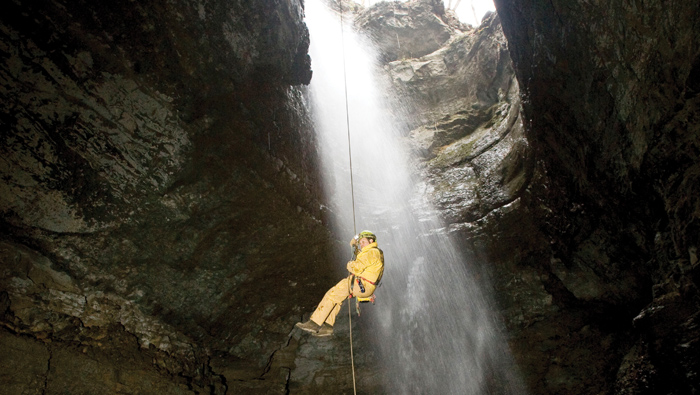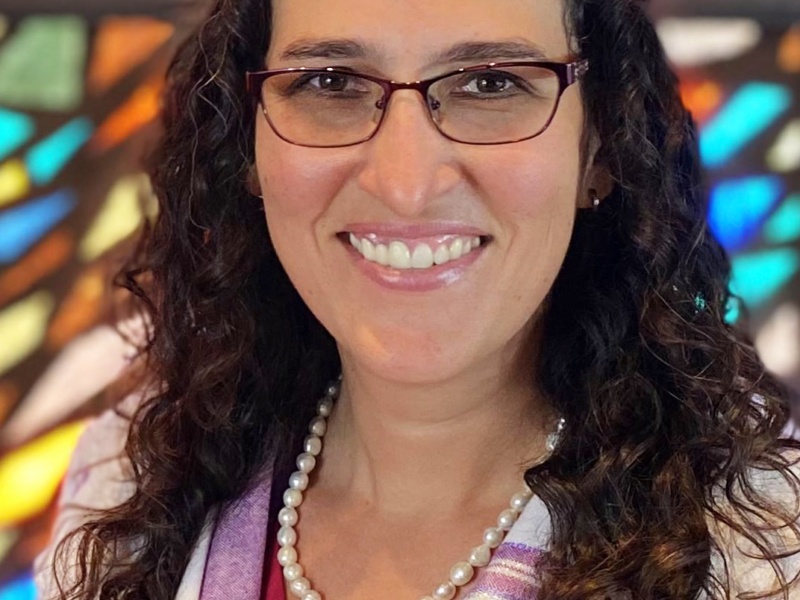An American spelunker’s accidental discovery of long-buried buttons, a comb and a tin cup was the key to unearthing a decades-old story of ingenuity and survival during the Holocaust. This finding is the subject of “No Place on Earth,” a film that the Greater Phoenix Jewish Film Festival, Phoenix Holocaust Survivors’ Association and Generations After will present at 2 pm on Sunday, May 7 at the Arizona Jewish Historical Society Cutler-Plotkin Jewish Heritage Center in Phoenix.
“No Place on Earth” brings to light the untold story of 38 Ukrainian Jews who survived World War II by living in a system of deep caves for 18 months, the longest-recorded uninterrupted underground survival in recorded history. Based on interviews with former cave inhabitants and the caving expert who uncovered the story, the docudrama is an extraordinary testament to resourcefulness, willpower and endurance against all odds.
While mapping out the largest cave system in Ukraine in the 1990s, explorer and investigator Chris Nicola discovered evidence that five Jewish families spent nearly a year and a half in the dank, pitch-black darkness of the Verteba Cave and Priest’s Grotto to escape the Nazis. Nicola joined with director Janet Tobias to film the incredible story of human survival.
Through extensive research and determination, Nicola located several of the survivors and asked them share their stories of strength and perseverance. What differentiates this film is the focus on happier personal stories instead of on the typical tragedies related to the subject.
Nicola underscores this point when he recounts that one of the cave’s former inhabitants told him that of all the Holocaust films he had seen over the years, “No Place on Earth” made him “cry more tears of joy than sorrow.”
“I learned the Holocaust isn’t one story of how six million people perished; it’s six million individual stories,” says Nicola.
One of the survivors at the center of the film is Esther Stermer. The matriarchal leader of the five families who hid in the caves raised her children to never blindly follow authority. Many of the interview subjects in the film said they felt they owed their survival to the linchpin of the extended family unit – Esther – and a family bond that gave them the strength they needed to stick together and survive despite immeasurable odds.
In the press notes, Tobias writes that at one point during her and Nicola’s visit to the caves, the visitors decided to turn off the lights for about five minutes: “That blew me away. I cannot imagine even a couple of days in the dark – but to have over 500 days in that level of darkness, I just couldn’t fathom. And the temperature is always cool, in the mid-50s, with 90% humidity, year-round. It’s always wet and cold. Theirs was not the modern caving experience with thermal underwear, caving suits and lights on helmets. They had some candles and kerosene in jars with wicks, which they had to use sparingly. They had nothing – except each other and their own ingenuity.”
Nicola will be on hand at the film premiere to discuss his experiences and to answer questions from the audience. He also runs The Priest’s Grotto Heritage Project, a genocide-awareness project where the grandchildren of those who lived in Priest’s Grotto during the Holocaust work hand-in-hand with the grandchildren of those who lived above the cave to build an exhibit to honor those courageous 38 and what they did so long ago. Keeping this story alive for future generations can hopefully prevent such genocides as the Holocaust from ever happening again.
WHAT: Arizona premiere of the film “No Place on Earth,” with special guest Chris Nicola in attendance
WHEN: 2 pm on Sunday, May 7
WHERE: Arizona Jewish Historical Society Cutler-Plotkin Jewish Heritage Center, 122 E. Culver St. in Phoenix
COST: $10 general admission, $5 students; free for survivors plus one guest. Order tickets online
at phoenixhsa.org





